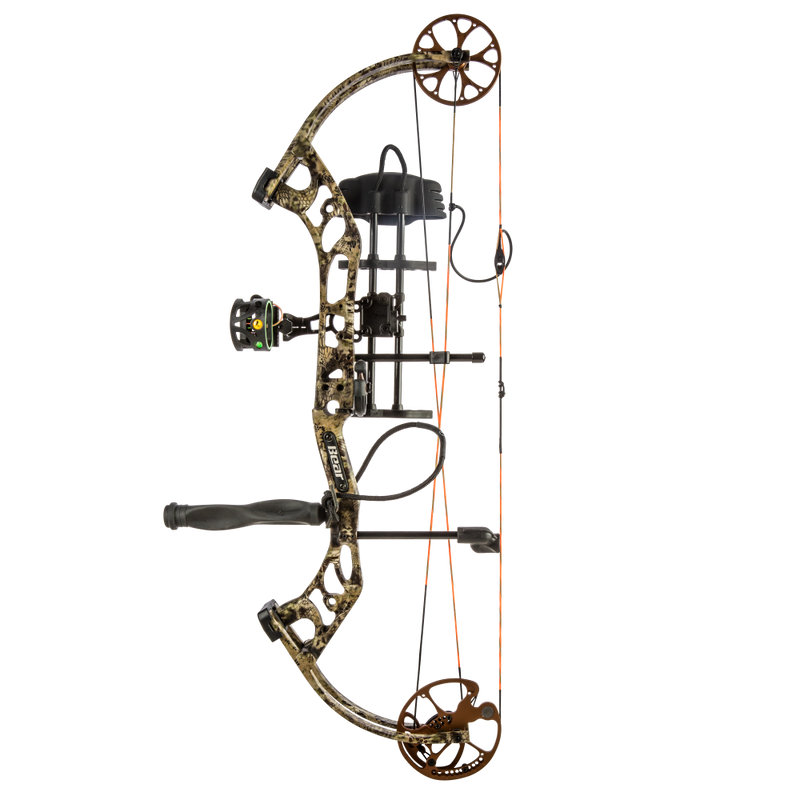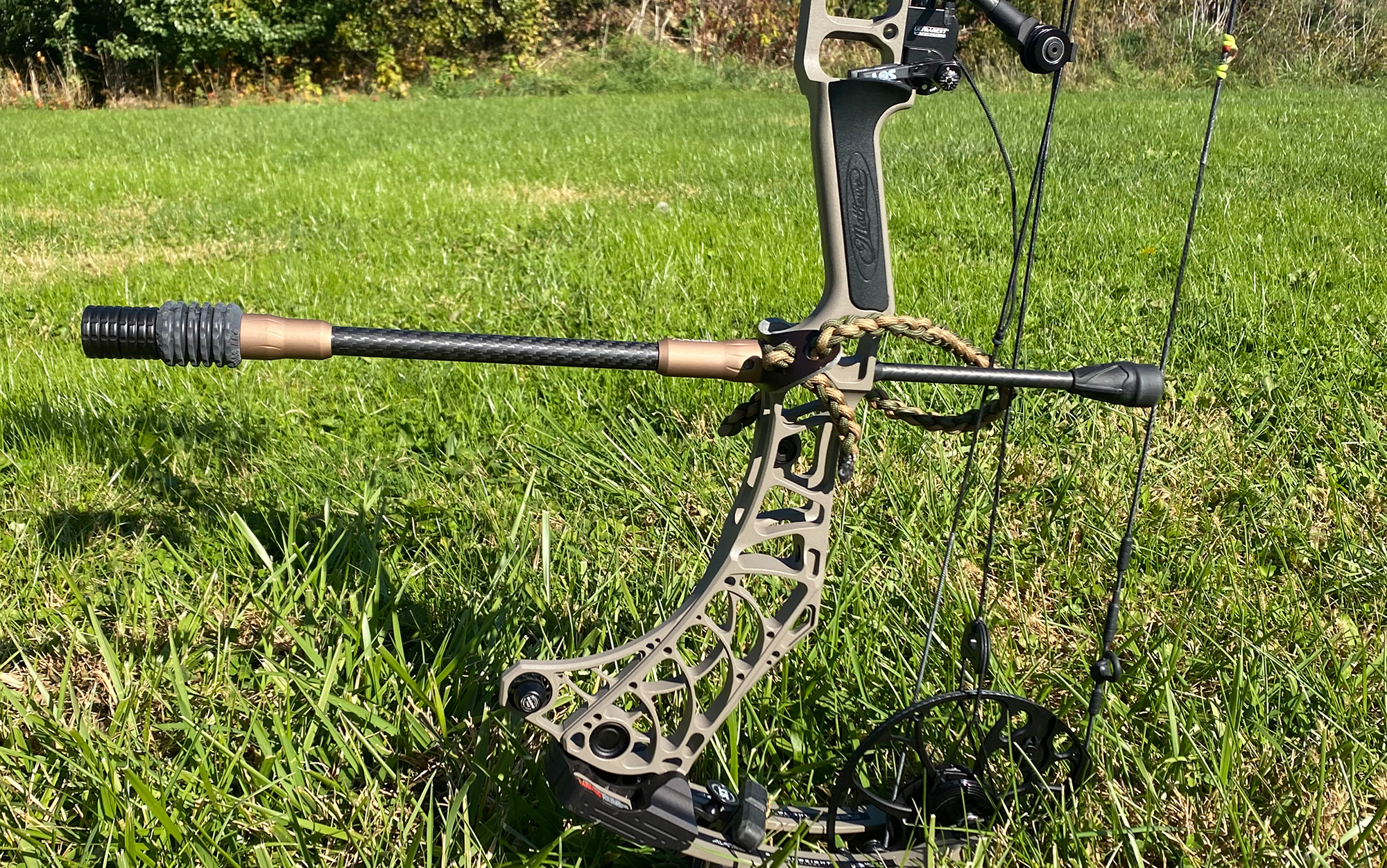Maximize Your Shot: Choosing the Right Archery Stabilizer
Wiki Article
Master the Art of Archery: Comprehending the Importance of a Stabilizer in Your Configuration
Archery, an old sporting activity that needs accuracy, ability, and focus, has actually mesmerized people for centuries. Whether one is a seasoned archer or just starting their journey, the importance of a stabilizer in their arrangement can not be overemphasized. This critical tool plays a considerable role in enhancing accuracy and boosting total performance. By understanding the benefits of making use of a stabilizer, thinking about the ideal factors when selecting one, and appropriately installing and readjusting it, archers can boost their abilities to new heights. Let us discover the complexities of mastering the art of archery and uncover the vital role that a stabilizer plays in achieving success on the variety.The Role of a Stabilizer in Archery
A stabilizer plays a crucial duty in archery by improving equilibrium and decreasing vibrations throughout the shot. A stabilizer helps to combat these resonances by dissipating the power and absorbing (archery stabilizer).One of the primary advantages of a stabilizer is its capability to boost equilibrium. The weight of the stabilizer helps to disperse the weight evenly, decreasing the pressure on the archer's arm and boosting security.
In addition to equilibrium, a stabilizer also aids to reduce torque. The weight and layout of a stabilizer neutralize this turning, making certain a more accurate and regular shot.
Advantages of Making Use Of a Stabilizer
The use of a stabilizer in archery supplies many advantages that improve an archer's performance and overall shooting experience. By soaking up and dampening these resonances, the stabilizer enhances the security of the bow, permitting for even more consistent and specific shots.Second of all, a stabilizer aids to balance the bow by adding weight to the front end. This weight distribution neutralizes the natural propensity of the acquiesce tip onward upon launch, decreasing the quantity of movement and enhancing the archer's capacity to preserve objective on target.

Lastly, a stabilizer can likewise function as a shock absorber, reducing the shock and recoil experienced upon launch. This not just boosts the convenience of capturing however also minimizes the risk of injury or pressure on the archer's body.
Just How a Stabilizer Enhances Precision
Enhancing the accuracy of an archer's shots, a stabilizer plays an essential role in boosting overall efficiency. archery stabilizer. By adding security to the bow, a stabilizer helps decrease the unwanted activity and vibration that can take place during a shot. This decrease in motion enables the archer to preserve a consistent aim, causing more precise and consistent shots
In addition, a stabilizer aids to wet resonances that happen upon release. These vibrations can cause the acquiesce tremble, impacting the arrow's trajectory and precision. By soaking up and dissipating these resonances, a stabilizer assists to maintain the bow's security and make certain a smooth and exact shot.
In addition, a stabilizer can likewise aid in balancing the weight circulation of the bow (archery stabilizer). By adding weight to the front of the bow, a stabilizer helps to balance the weight of devices, such as quivers or sights, which may be attached to the bow. This balanced weight circulation assists the archer maintain a steady and regulated shooting placement, resulting in improved precision
Elements to Consider When Picking a Stabilizer
When picking a stabilizer for your bow, it is necessary to consider numerous aspects that will certainly add to its total performance and viability for your private shooting style. The very first factor to take into consideration is the length of the stabilizer. Stabilizers are available in various sizes, varying from brief to use this link long. Longer stabilizers usually offer extra stability and balance, yet they can also be much heavier and extra challenging to maneuver. Much shorter stabilizers, on the other hand, supply better ability to move yet may compromise some security.One more element to think about is the weight of the stabilizer. The weight of the stabilizer can impact the equilibrium of your bow.
Additionally, it is essential to think about the style and construction of the stabilizer. Some stabilizers have adjustable features, such as adjustable length or flexible weights, which allow you to customize the stabilizer to your details needs. The materials utilized in the building of the stabilizer can likewise impact its effectiveness. Carbon fiber stabilizers are light-weight and long lasting, while light weight aluminum stabilizers supply a balance in between weight and rigidity.
Finally, it is vital to consider your shooting design and choices. Different stabilizers might work far better for certain shooting designs, such as target shooting or hunting. It is advisable to speak with seasoned archers or experts to identify which stabilizer will certainly best match your private demands. Generally, considering these variables will assist ensure that you select a stabilizer that enhances your capturing experience and boosts your accuracy.
Tips for Correctly Setting Up and Adjusting a Stabilizer
Longer stabilizers offer more security but can be less maneuverable, while much shorter stabilizers supply raised ability to move however may sacrifice stability. As soon as you have actually selected the appropriate length, attach the stabilizer to the bow using the given click for more placing equipment. Ensure that the stabilizer is securely secured and aligned with the bow's riser.After mounting the stabilizer, it is necessary to make modifications to accomplish the desired equilibrium and shot consistency. Begin by adjusting the weight circulation along the stabilizer. Additionally, take into consideration changing the angle of the stabilizer to tweak the shot.

Conclusion
In final thought, a stabilizer plays an important function in archery by boosting precision and decreasing bow torque. By adding weight to the bow, it helps to support the shot and balance. When picking a stabilizer, factors such as material, length, and weight need to be considered to meet individual needs. Proper installation and adjustment of the stabilizer are additionally essential for ideal performance. Mastering the usage of a stabilizer can substantially boost the archer's ability and accuracy.In addition, a stabilizer can additionally help in stabilizing the weight circulation of the bow. By adding weight to the front of the bow, a stabilizer assists to stabilize the weight of accessories, such as views or quivers, which might be affixed to the bow. Some stabilizers have flexible attributes, such as adjustable size or adjustable weights, which permit you to personalize the stabilizer to your particular needs. Carbon fiber stabilizers are long lasting and lightweight, while light weight aluminum stabilizers offer an equilibrium between weight and strength.
Longer stabilizers offer even more security but can be less manoeuvrable, while shorter stabilizers supply boosted maneuverability yet may give up stability.
Report this wiki page